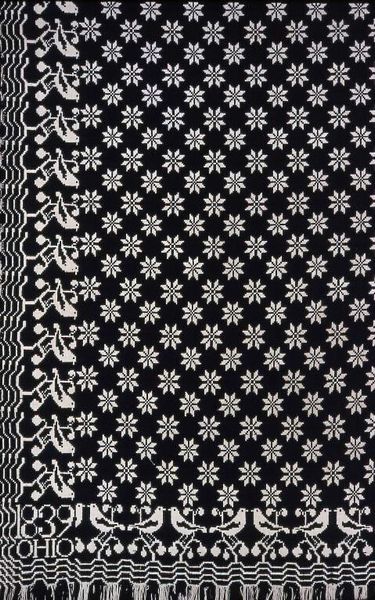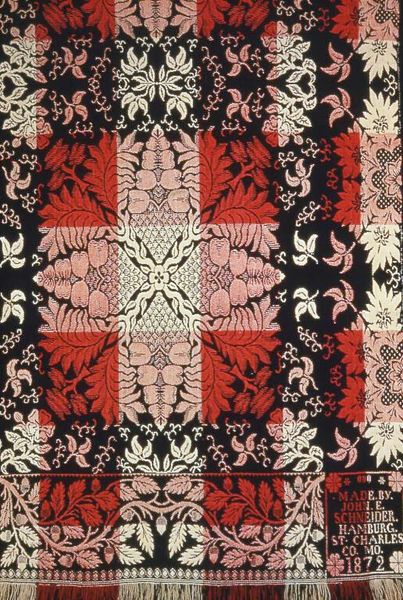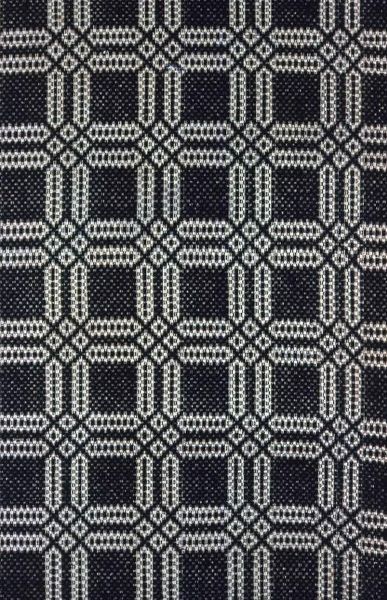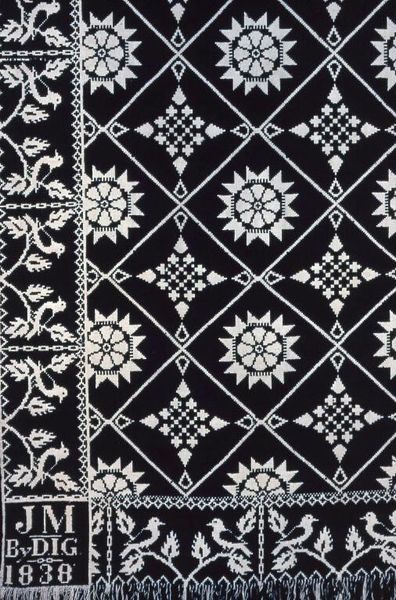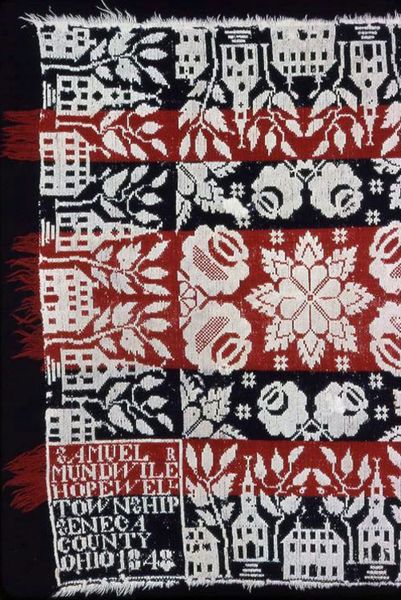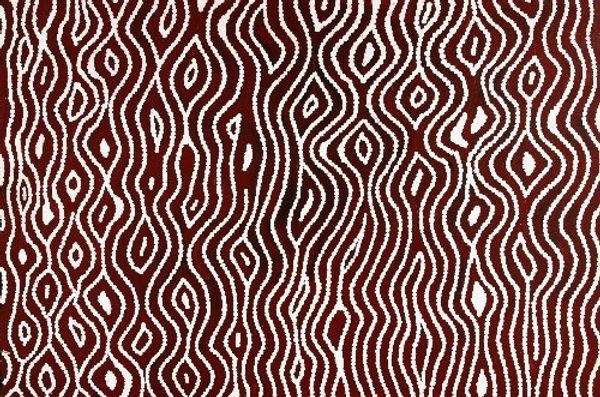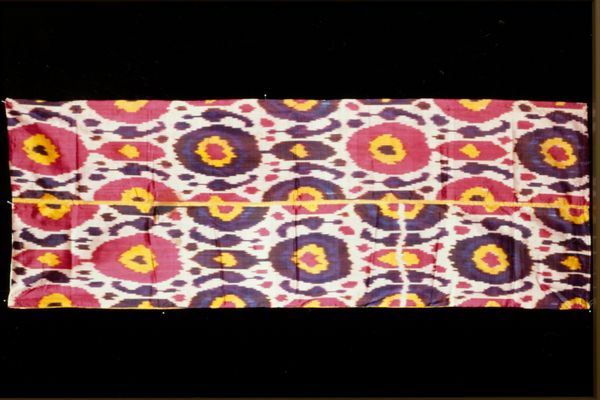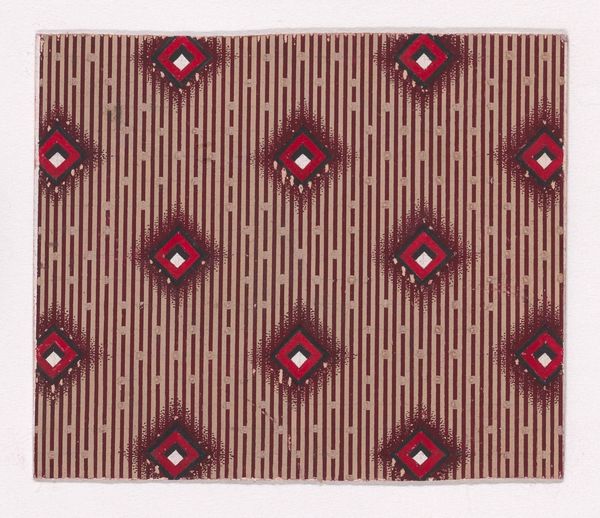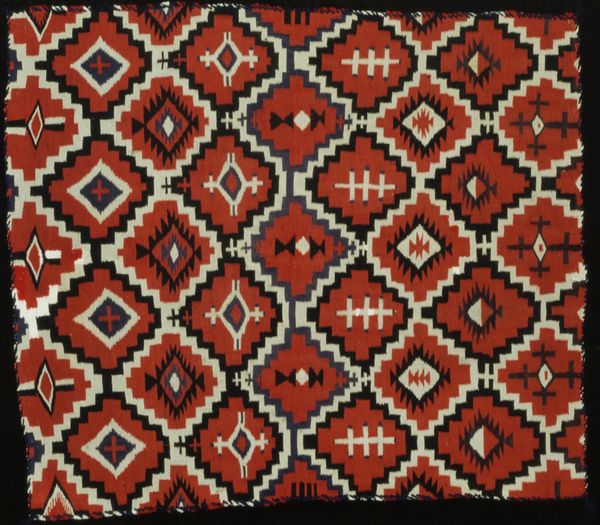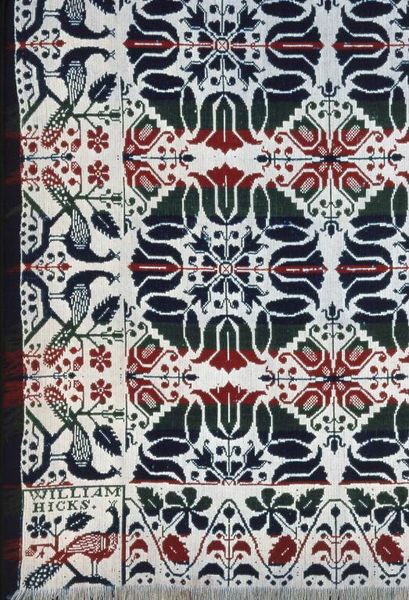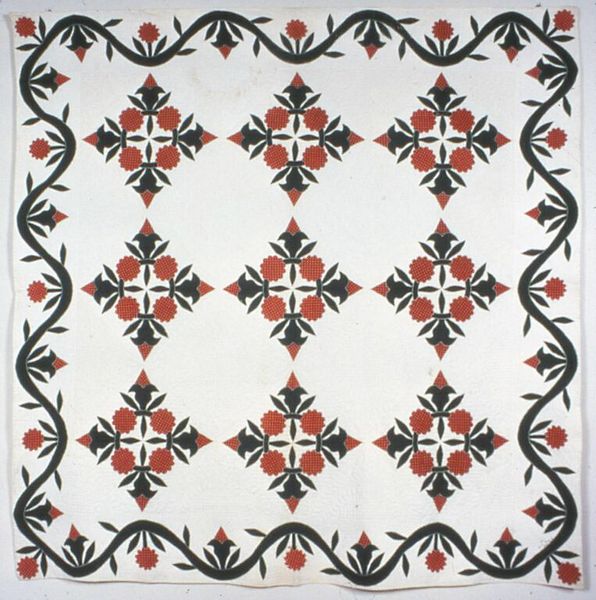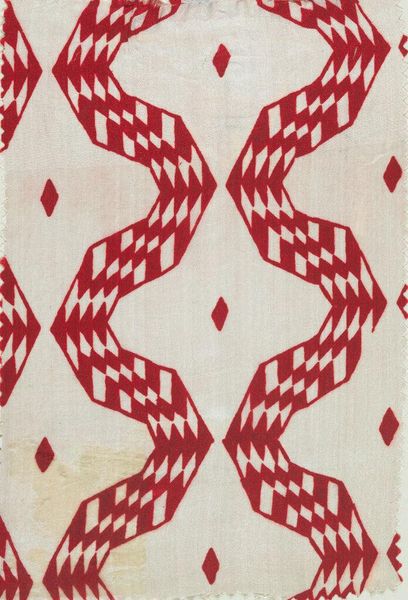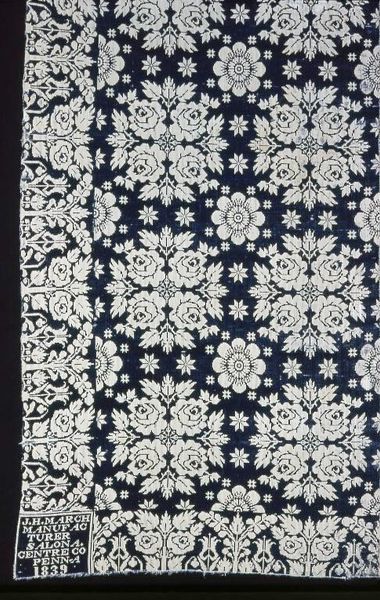
weaving, textile
#
weaving
#
textile
#
geometric pattern
#
geometric
Dimensions: 213.5 × 193.2 cm (84 × 76 in.)
Copyright: Public Domain
Curator: Let’s consider this woven coverlet from around 1840, now residing here at The Art Institute of Chicago. What's your immediate take on this piece? Editor: It's surprisingly vibrant for something so old! I see that rich indigo, punctuated by sharp white and rust red, gives it a striking, almost modern feel. There is such a deliberate grid, and so many tiny choices, which create these fields of optical delight. Curator: Woven by Mrs. Woodcock, this coverlet offers an intriguing window into the decorative arts and textile production of its era. These textiles were more than mere utility. The time involved represents labor, and within these patterns are the coded meanings known within her community. Editor: Absolutely, these weren't just functional objects; they were carriers of cultural and social significance. Textiles like these speak to identity, heritage, and often resistance, especially for women, enslaved, or marginalized communities whose voices were often suppressed. How did a weaver like Mrs. Woodcock see her work, what constraints or opportunities did her place in her own community present? Curator: This era was characterized by significant industrial and social change, shaping everything, from the availability of materials to the aesthetic preferences of consumers. These geometric patterns, common in woven goods of the time, provided an accepted formal language in which to transmit symbols. Editor: And considering those constraints—limited material options, the demands of repetitive labor, social expectation around how women or specific cultural groups should be spending their time. What does a piece like this communicate in the language of resistance to control over their work and time, their bodies and stories? Curator: I'd also like to consider this piece in the larger story of 19th-century trade and production. How does an object such as this become an artwork, or remain a craft? Museums play an enormous role. In elevating pieces, institutions declare historical value. Editor: Exactly! I wonder how the perception of such textiles has changed since its creation, through different curatorial frameworks. Has the presentation of a piece such as this upheld power structures, or offered critiques on gender, or labor inequality? Curator: It is a complex intersection of artistic expression, cultural narrative, and historical context. Editor: Definitely food for thought, revealing stories woven deep into its very fabric.
Comments
No comments
Be the first to comment and join the conversation on the ultimate creative platform.

